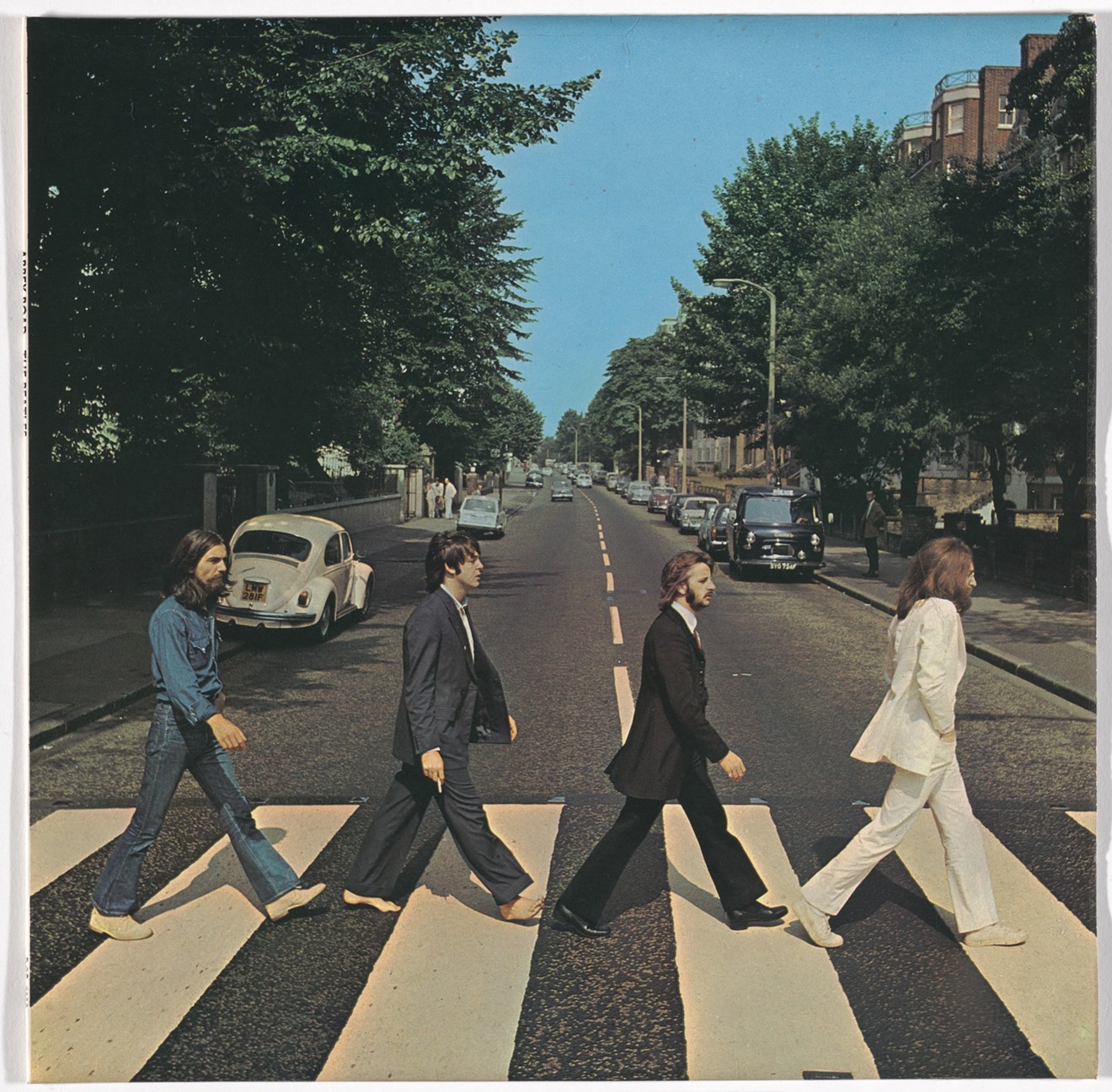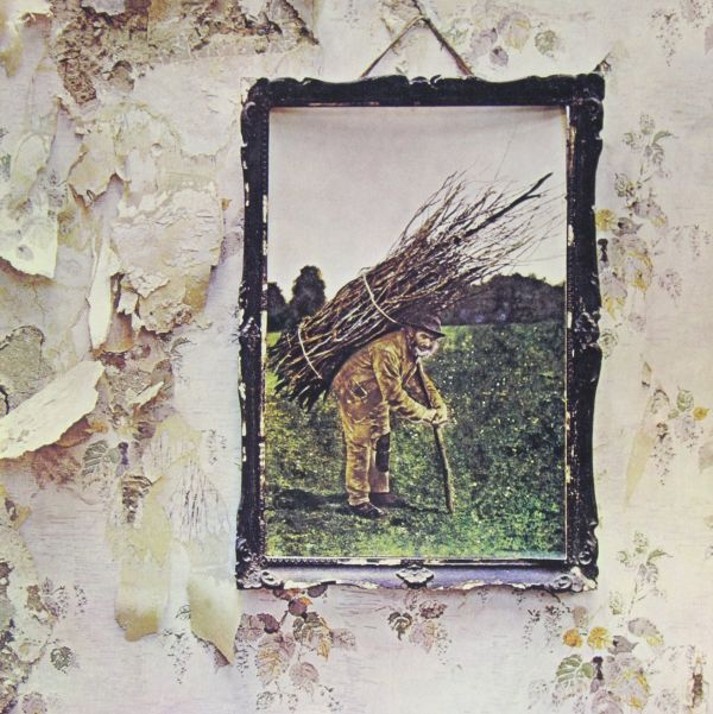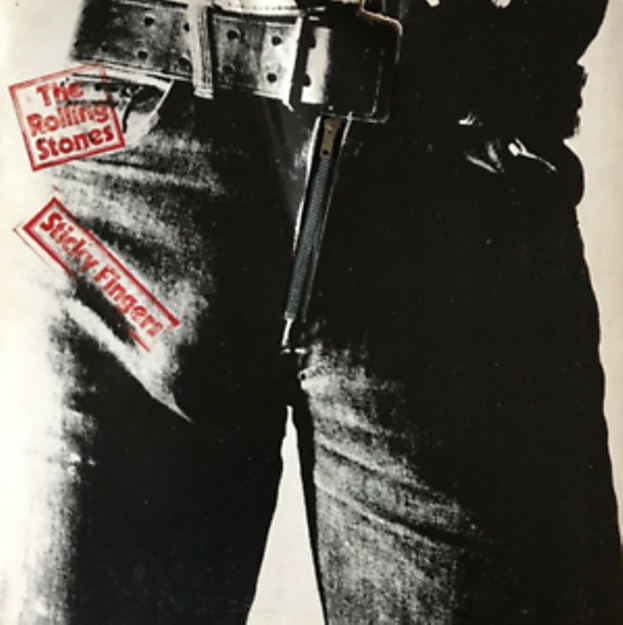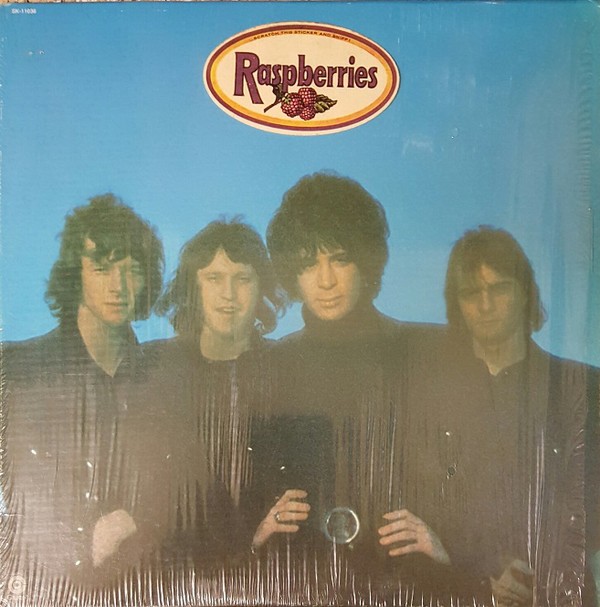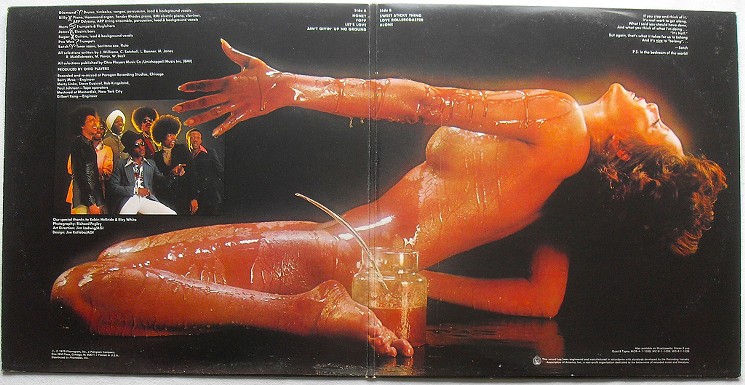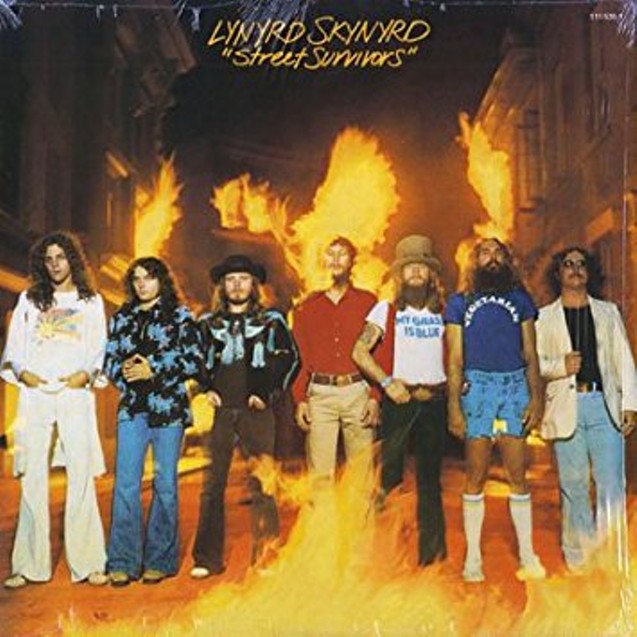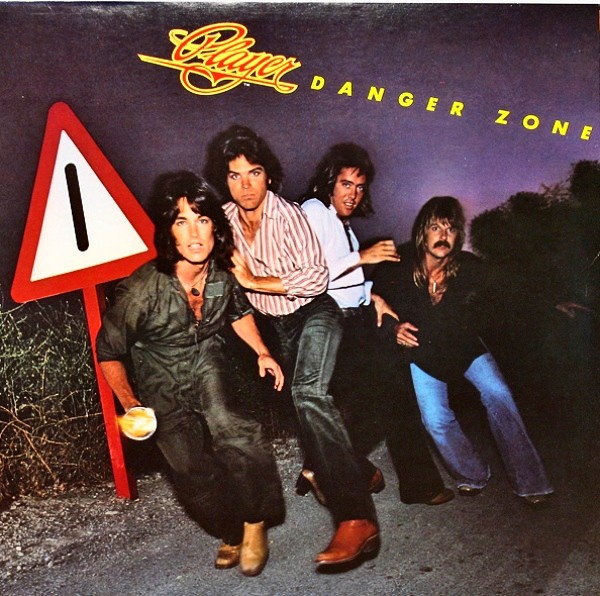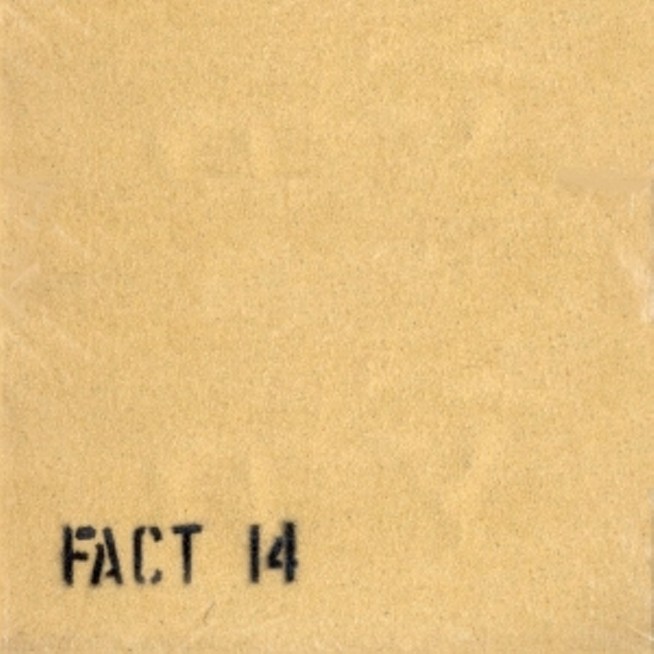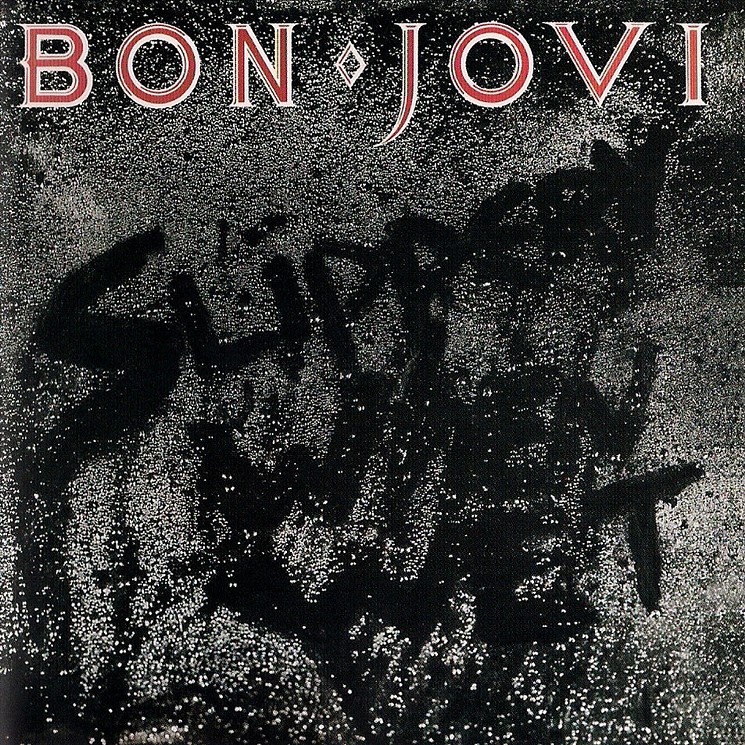
The cover to the Beatles 1969 album Abbey Road. In the '80s, PC police airbrushed the cigarette out for U.S. posters.
Apple Records
It got us thinking about Not Safe for Work Photos, and for our purposes here, Not Safe for Work Album Covers. Which beloved album covers nearly endangered the people who appeared on them? And which covers endangered the unsuspecting consumers who gazed upon them? Here are some of the most dangerous album covers ever to house harmless black plastic with four sharp and piercing corners.
The Beatles — Abbey Road (1969)
The Fab Four were the kings of sending mixed messages on their album covers, like giving Aleister Crowley, the "Wickedest Man in the World," top-row prominence among Sgt. Pepper's illustrious crowd. They later incited “do what thou wilt”-ed flower children like Charles Manson to misinterpret Beatles music by giving them an album with a blank cover for a Rorschach test. In contrast, the landmark Abbey Road cover showed the Fab Four at their most responsible and safety-conscious, by not crossing in the middle of the block, but rather adhering to a crosswalk zebra. But that hasn't stopped millions of fans from propagating a rumor that one of the Fab pedestrians was dead, not to mention making this London's most congested and dangerous intersection.
Blind Faith — Blind Faith (1970)
This sleeve is not only not safe for work, it could get you arrested today as a possessor of child pornography by some over-zealous police constable. And more importantly, the downward trajectory of the plane the naked youth is holding could be a severe trigger to flight phobics everywhere. No wonder this group broke up upon impact. Stop looking at it. Right now.
Led Zeppelin — Led Zeppelin IV (1971)
The backmasking brigade hoping for a clear pathway to Hell's descent by playing "Stairway to Heaven"
The Rolling Stones — Sticky Fingers (1971)
This cover had a real working zipper, and zipper catches skin, so you can sustain your own personal Altamont without trying very hard.
Raspberries — Raspberries (1972)
Even shrink-wrapping couldn't protect fans from the Raspberries' height of irresponsibility — including a scratch-and-sniff raspberry-scented sticker on this seemingly innocuous album cover, which made certain listeners break out in hives. This album should have carried a more responsible sticker: "Don't 'Go All the Way' With salicylate allergies."
The Ohio Players — Honey (1975)
This cover is essentially the funk version of the Goldfinger death scene in which Jill Masterson (played by actress Shirley Eaton) was killed off by the titular James Bond villain after being covered with gold paint. This led to rumors that Eaton actually died from gold paint asphyxiation in real life. When The Ohio Players decided to cover October 1974 Playmate of the Month Ester Cordet with honey-colored acrylic paint for their album sleeve, it spawned similar urban myths that the model was horribly disfigured during the photo shoot, after which the Ohio Players' manager stabbed her, but not before recording her screams for insertion in the band's 1976 chart-topper "Love Rollercoaster." Of course, none of this is even remotely true, but this would be a good time to point out that eating raw honey, whether in the raw or not, could expose you to food poisoning.
Lynyrd Skynyrd — Street Survivors (1977)
From the "Be Careful What You Pose For" files comes this regrettable sleeve, issued three days before the ill-fated plane crash that claimed the lives of every band member licked by flames on this withdrawn cover. Not until Dream Theater's Scenes From New York album, with its cover illustration of the World Trade Center engulfed in flames, released on September 11, 2001, would an album cover be so eerily prescient.
Player — Danger Zone (1978)
Unlike the road-striding Beatles, the "Baby Come Back" boys refuse to play it safe, darting out in a zone clearly marked with danger signage in the dead of night. Even with a halogen flashlight, it is an ill-advised course of action, but if sagging record sales decry that you must resort to such desperation, wearing white is always your best option for visibility.
AC/DC — If You Want Blood (1978)
No one band has lobbied harder for the electrocution of one of their members as AC/DC has done with Angus Young, starting with the cover of that first international release of High Voltage in 1976, where the errant schoolboy's ungrounded sneakers are attracting a lightning bolt. On Powerage (1978), the band took the more direct approach, and simply hardwired his sleeves with heavy circuitry. That same year, the band released this live album, which carried this unspoken plea for safety loud and clear to headbangers everywhere: Don't play catch with a flying Gibson SG — you will lose.
The Durutti Column — The Return of the Durutti Column (1980)
Do you get the feeling that The Durutti Column's report card said: "Does not work well with others"? The first edition of this abrasive album came in a sandpaper sleeve that scratched any records stacked next to it.
Bon Jovi — Slippery When Wet (1986)
The original sleeve sported a female in a clinging wet T-shirt, but Jon Bon Jovi himself nixed it when the record company gave the potentially offensive sleeve a pink border. Instead, they issued the album in a sleeve with a moistened black garbage bag design that was as eye-catching as a gray Crayola melting on the sidewalk. But for those myth-busters who actually want to try this at home, if you were to run this Slippery When Wet sleeve under a faucet and leave it undetected on a city street, someone would most assuredly fall and break a leg.
Michael Jackson — Dangerous (1991)
When Michael Jackson released an album called Off the Wall, it was crazy good. When he released Thriller, it was thrilling. When he released Bad, it was all kinds of bad. So when he released an album called Dangerous, you'd better take his word for it that it was indeed a peril for all concerned. The fact that it jettisoned Quincy Jones, and contained new jack grooves and rap, in an attempt to attract a more younger and urban audience, should have sounded alarms. But more troubling was the cover, which hides every strip of facial tissue he altered with plastic surgery, and to date is the only album cover that draws connections between Aleister Crowley (yes, him again), the Elephant Man’s bones, Macaulay Culkin, P.T. Barnum, and Bubbles the Chimp.
Honorable mentions (images intentionally omitted):
Roxy Music — Country Life (1972)
This pastoral cover of two hot models covering different naughty bits can still cause outrage. Just for laughs, try posting it on Facebook, and see how fast it gets taken down. (We tried it, under 15 minutes, thank you for asking.)
Alice Cooper — School's Out (1972)
File under The World's Most Dangerous Inner Sleeve. Only hooligans would include a pair of women's panties as an album cozy without first checking if they are flame-retardant.
W.A.S.P. — "F**k Like a Beast" (1984) Technically a 45-sleeve, but one that was only released in the U.K., where the Brits were apparently undisturbed that this cover makes no attempt to illustrate if the beastly man with a circular saw for an appendage was wearing safety goggles.
Nirvana — Nevermind (1991)
Throwing the baby out with the bathwater is one thing. But throwing a baby in a chlorinated pool, and tempting it with money on a fish hook, will only lead to red, burning eyes and aquatic nightmares.
Brujeria — Matando Güeros (1993)
Whether or not this cover shows an actual severed head (the image was taken from the Mexican newspaper ¡Alarma!), it is quite upsetting. Interestingly enough, authoritative experts have pointed out that continued exposure to dead bodies does not constitute a health hazard, and spraying the cover with disinfectant is a serious waste of disinfectant.

